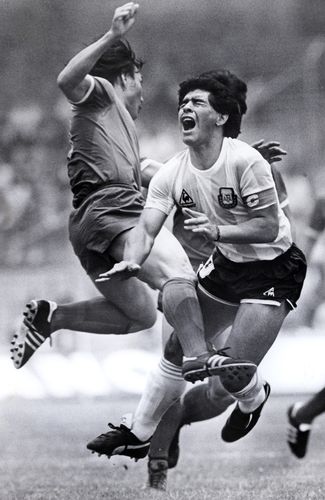An Argentine truck driver who had a part-time job advising the local youth football team chanced upon a group of kids playing in an open field. He noticed a boy with mesmerising skill and a magical left foot. This is a gift from God, the driver said to himself, as he watched little Diego Maradona. It is a gift Maradona used to conquer the world. His rise from the slums of Buenos Aires to the pinnacle of the beautiful game is the stuff of dreams. But, Maradona, who died aged 60 in November 2020, had his share of nightmares, too.
His troubles are well documented. Perhaps a shade too well; so much so that as years go by, his genius may get overshadowed by the problems—ranging from drug and alcohol addiction and “connections” to the Mafia to his temperamental nature and “gargantuan” ego. But, it would be grossly unjust to paint Maradona as a prima donna based on what is little more than hearsay. We need all the facts. And that is exactly what the new Discovery Plus documentary What Killed Maradona? offers. All the facts, painstakingly researched and concisely put together.
People who knew Maradona, those who followed his career closely and medical experts talk about factors that contributed to Maradona’s addiction and lifestyle and its effect on his health. His prodigious talent made him a target for fouls on the pitch and “dubious characters” off it. Maradona was 10 years old when he suffered his first major injury. He signed for Argentinos Juniors at 15 and became the youngest player to play in the first division; he was perhaps too young for the limelight.
As his career progressed, his income increased and so did the pressure to support a growing number of dependents. The teenager was already the head of the family and had relocated them to finer living quarters. Family was everything to him and that weight of responsibility made Maradona relentless in his pursuit of footballing greatness. But, he was suffering at some level, says psychologist Dr Pippa Grange in the documentary. By 1982, Maradona had started to ascend from exciting prospect to global superstar.
As the pressure mounted, he coped by thinking of himself as two people. He kept Diego separate, as a place to retreat to. But, at that point, Diego had no inkling how big Maradona would become. As desperate opponents continued to foul him, injuries and the use of painkillers became more frequent. The painkillers may have made his injuries worse. But, more significantly, the path from dependence on painkillers to drug addiction is well established. This has been explained in detail.
In 1982, Maradona signed up with Barcelona for a world record fee. It was a huge move for his career, but the 22-year-old was lonely in Spain. But, loneliness was not the worst of the problems he suffered at Barcelona. In 1983, Athletic Bilbao defender Andoni Goikoetxea, also known as the Butcher of Bilbao, found an easy way to deal with Maradona—break his left ankle. It was a different era in football and the flair players did not enjoy the protection they now get from the referees.
Maradona was out for three months, but he would suffer for the rest of his career and life. His left foot was never the same again, but the expectations of him continued to increase. Cocaine became a crutch. Maradona’s former personal trainer, Fernando Signorini, says in the documentary: “He said one day, ‘I was kicked to the top of the mountain, but they left me alone and nobody explained to me how to survive.’” In 1984, Napoli, then close to the bottom of the league, broke the world record again to sign him. The religious and football-loving people of Naples got a new saint, says the documentary.
The adulation lifted the lonely Maradona’s spirits; he had a new family. Giuseppe Bruscolotti, who was Napoli’s captain when Maradona arrived, says that the Argentine became one of the people. “He always fought for them against everybody,” he says. “He defended the south against the [footballing] power of the north (Milan, Turin).” With drugs numbing his pain, the little genius fed off the love of the people and inspired his team to win the Italian league twice. But, the hero worship soon became so relentless that it put him under stress again and his substance abuse worsened.
The Mafia also established a relationship with him. His life in Naples was defined by him having to make himself disappear from the suffocating atmosphere and then resurface to perform on the pitch. If the love in Italy was too much, the hate would destroy him. After singlehandedly winning the 1986 World Cup for Argentina, getting fouled 53 times in the process, he led his country to a second consecutive final at Italy 1990, knocking out the hosts along the way. Maradona’s Italian fans lashed out against him. For a man who thrived on adulation, it was traumatic, says the documentary.
As he got older, Maradona’s life became a vicious cycle of health problems, rehab and relapse. In a society which tends to oversimplify addiction, What Killed Maradona? reminds us of the importance of supporting those struggling to stay sober. It is a must watch, not only for football fans, but for anyone who wishes to understand an often underappreciated problem—the pitfalls of fame. For future generations of football fans, it is a comprehensive guide to the legend of Diego Maradona, without simplistic labelling.


